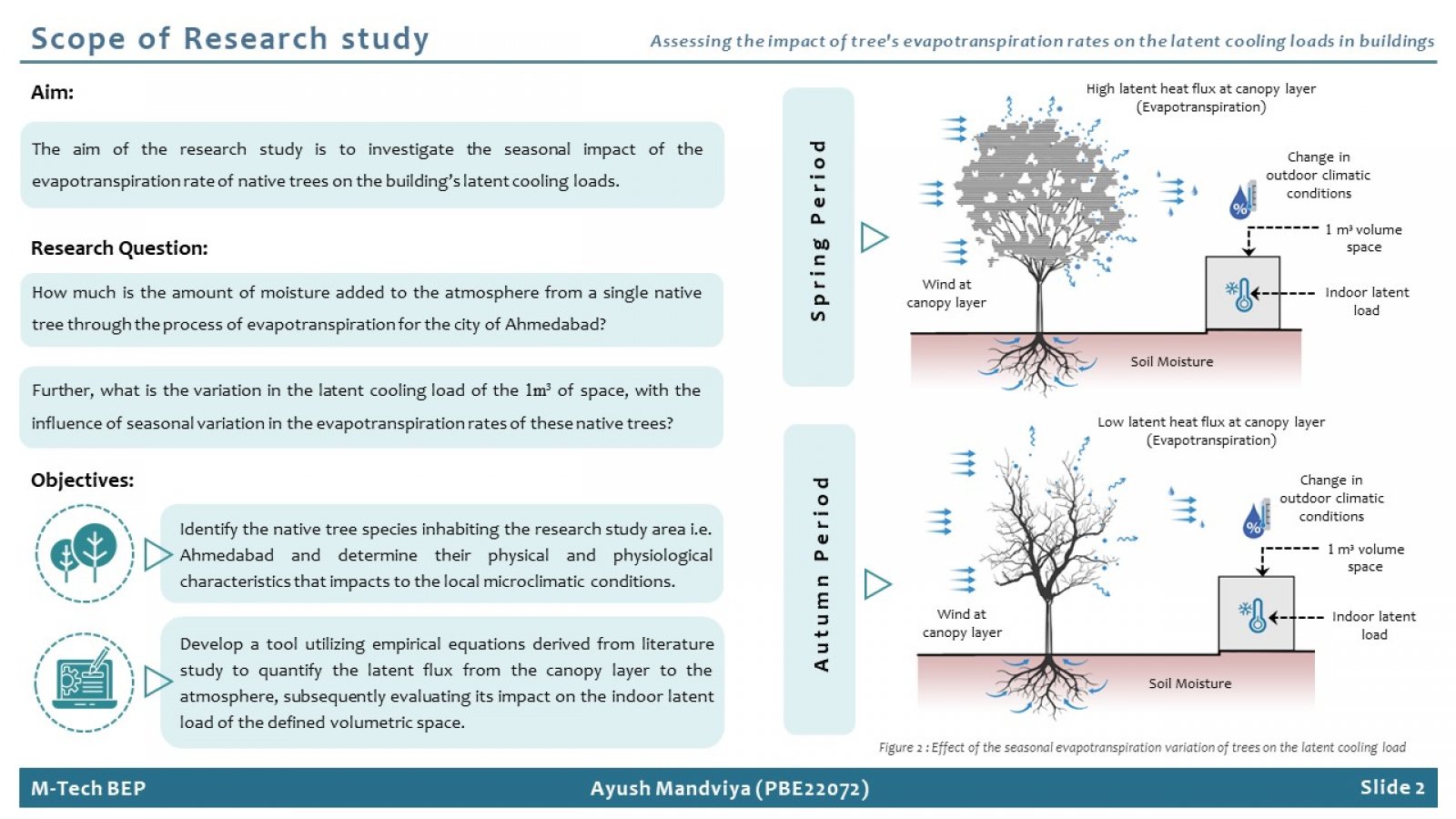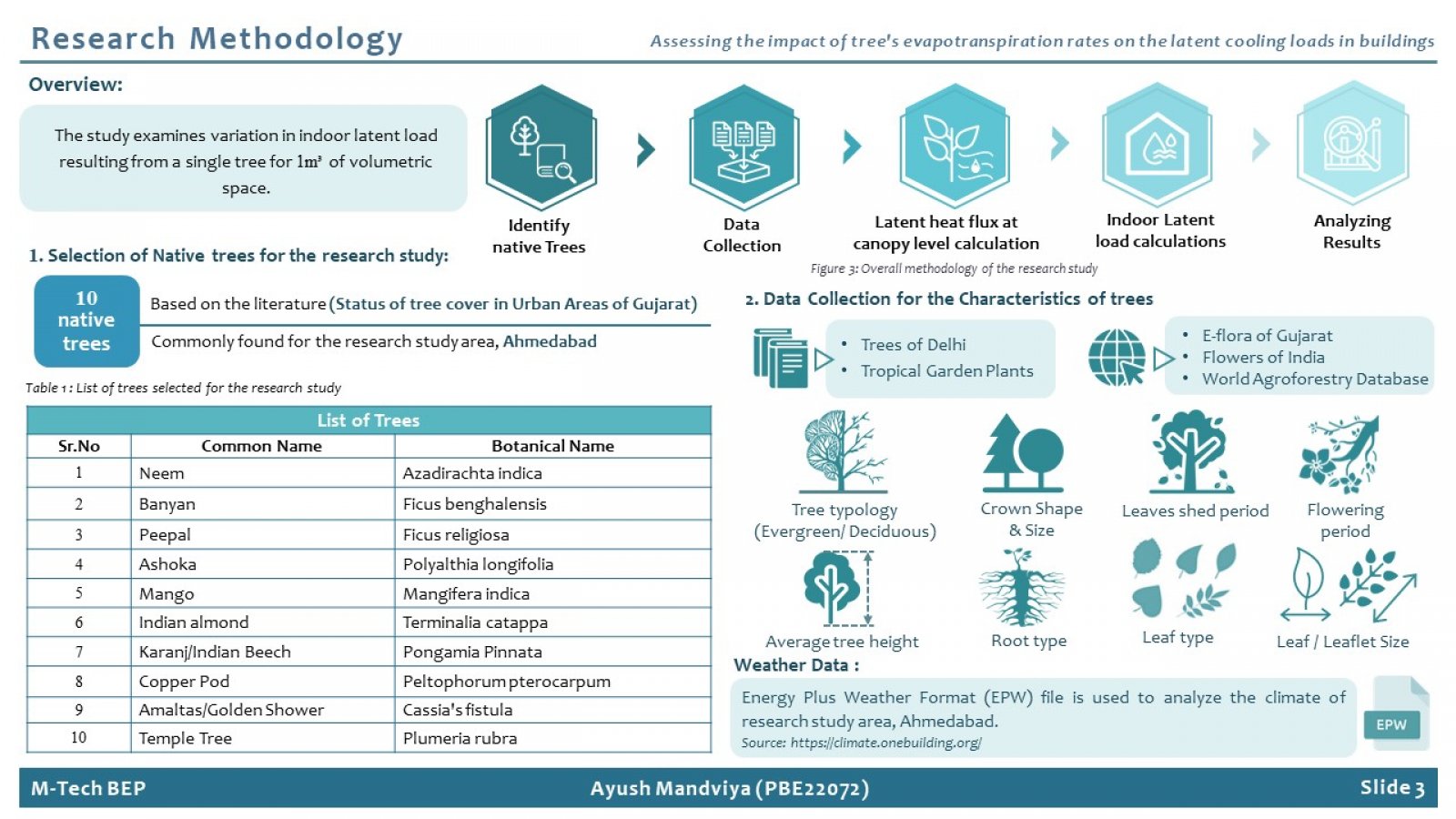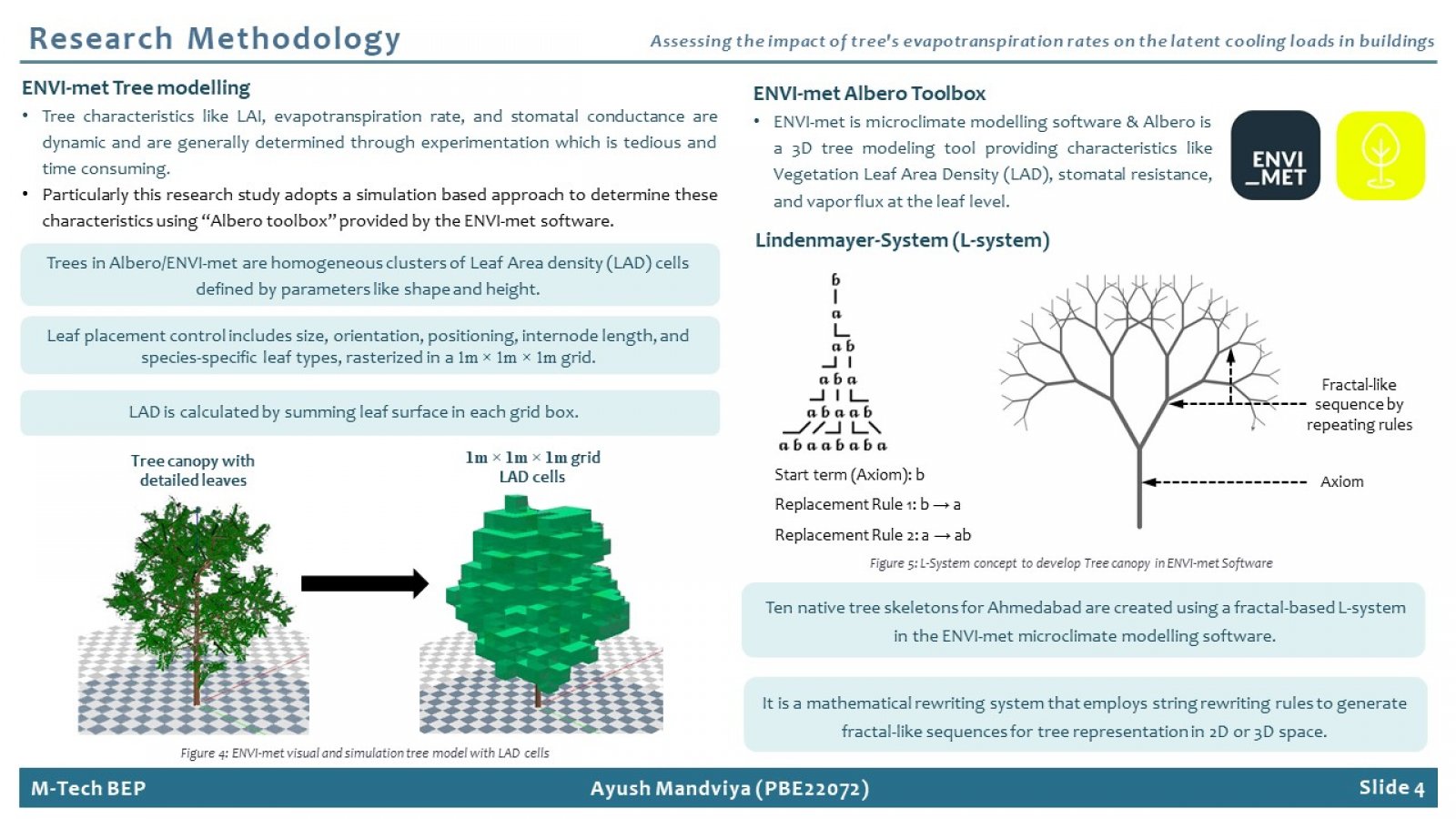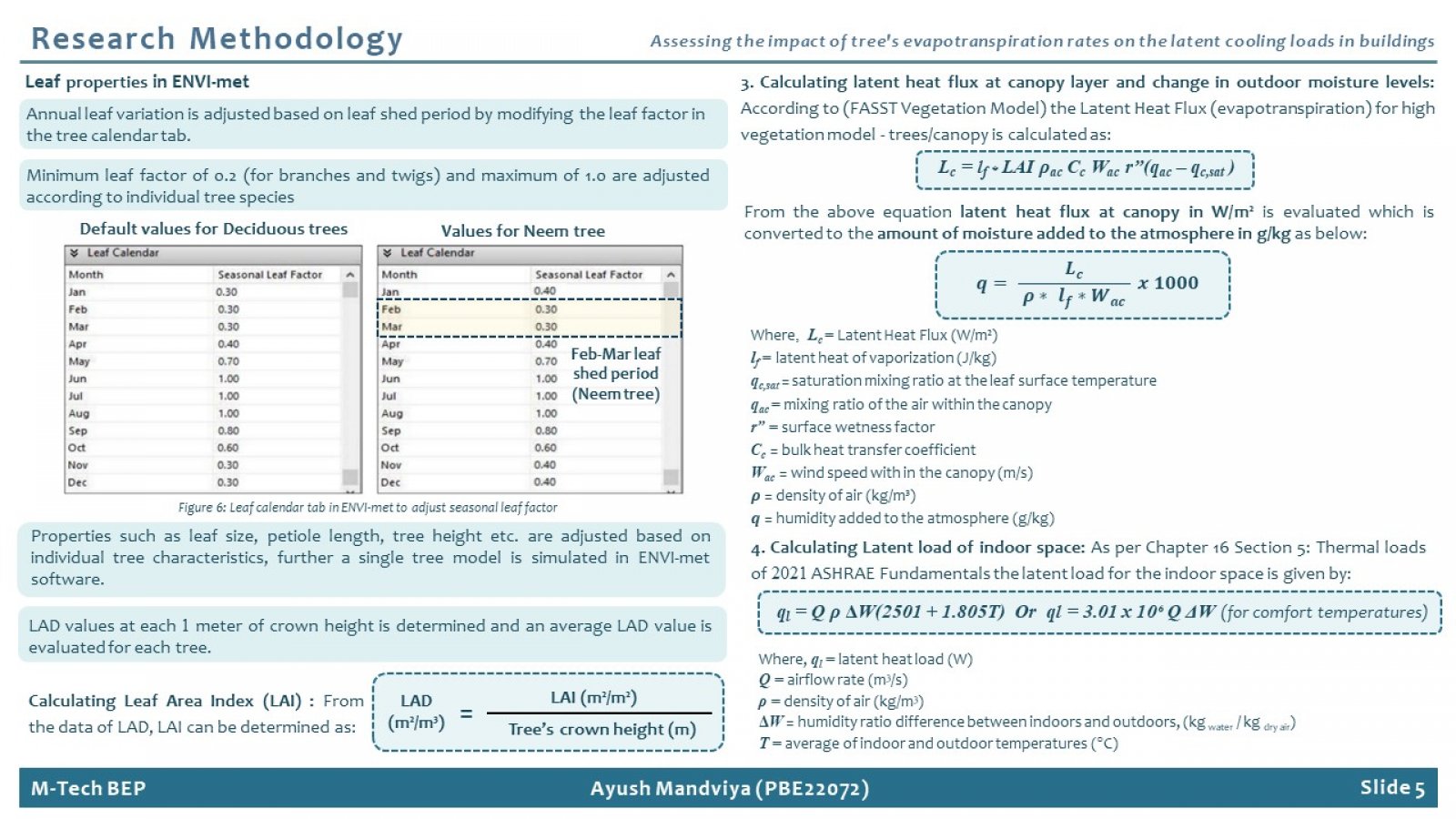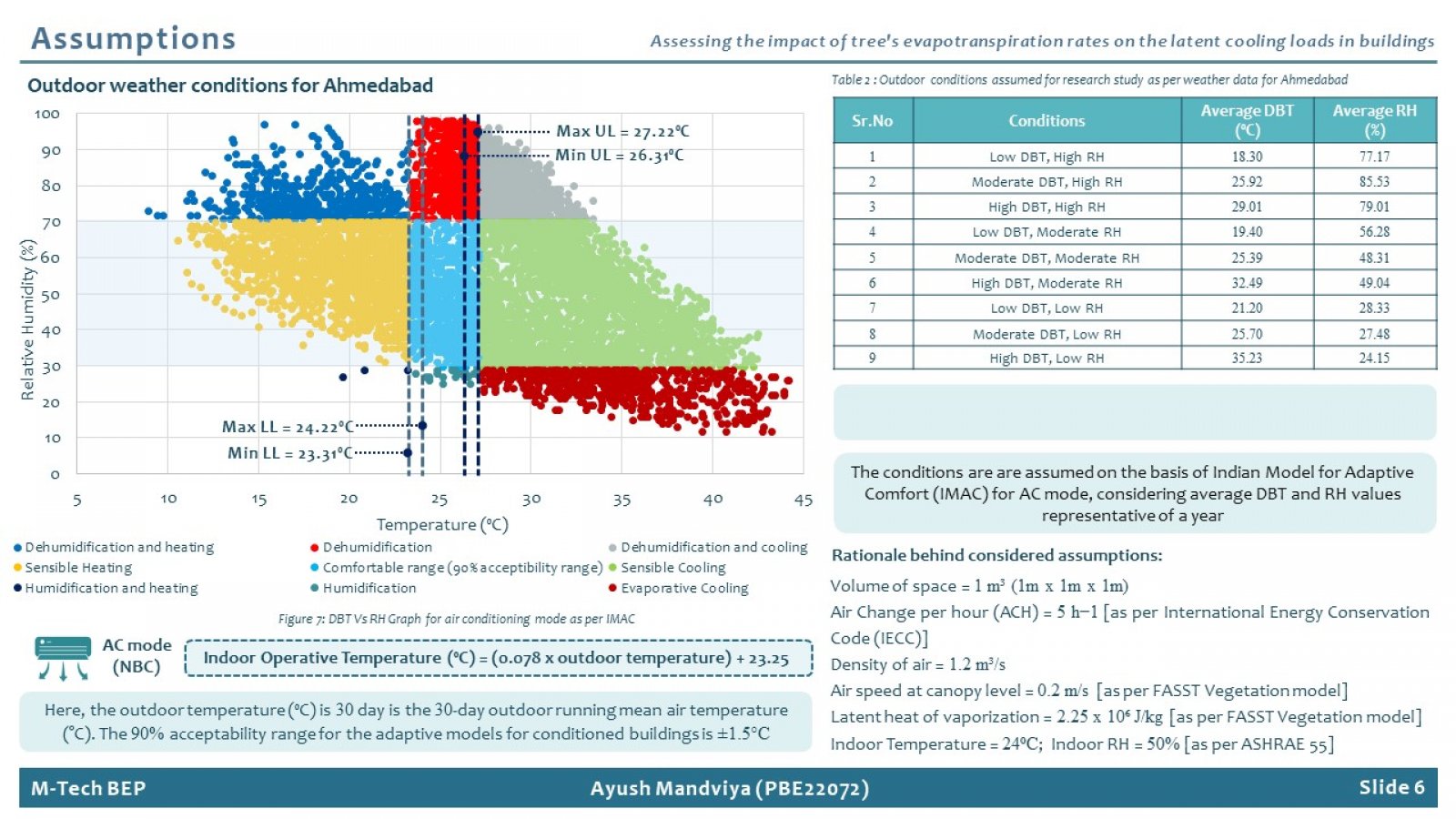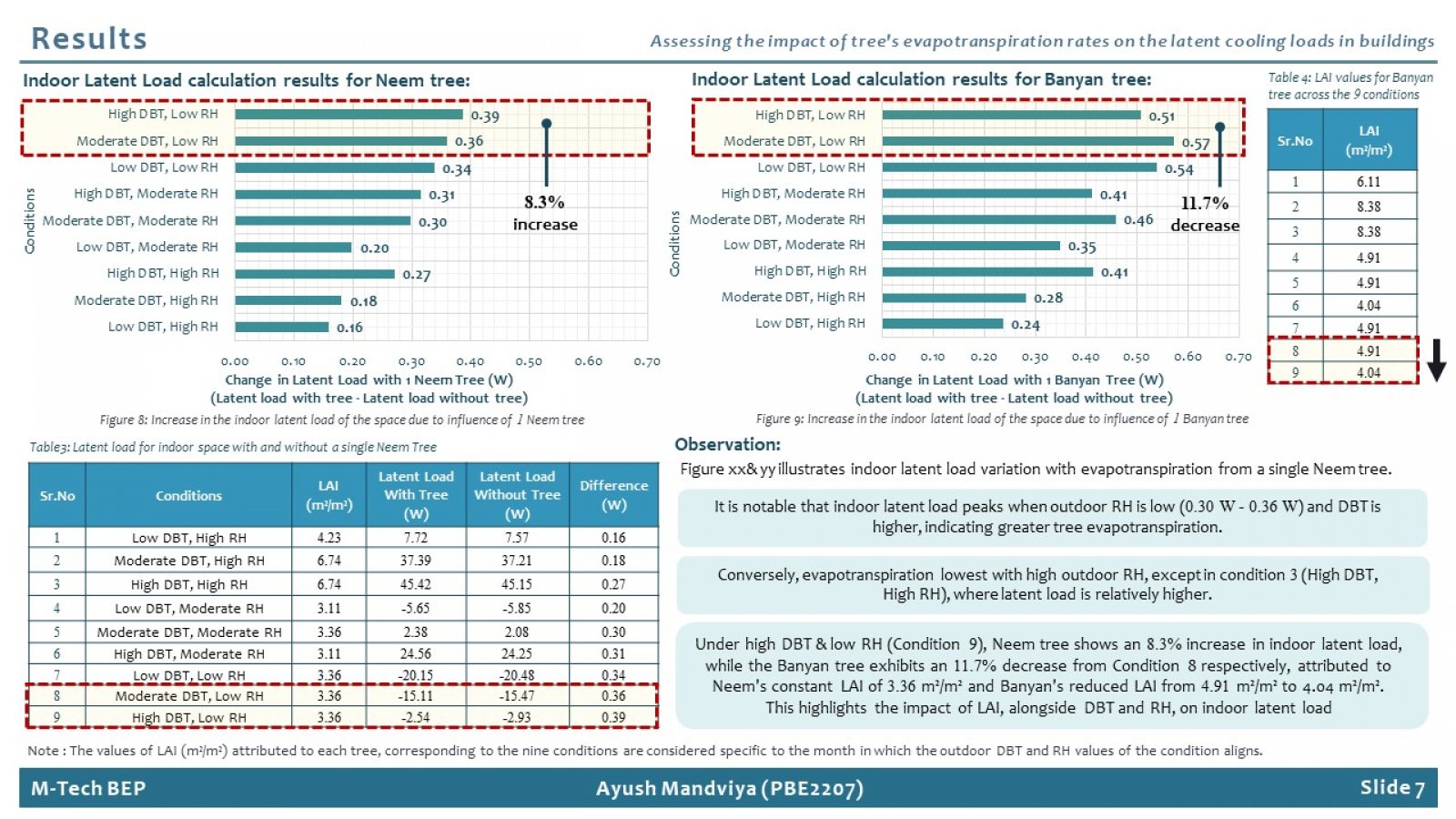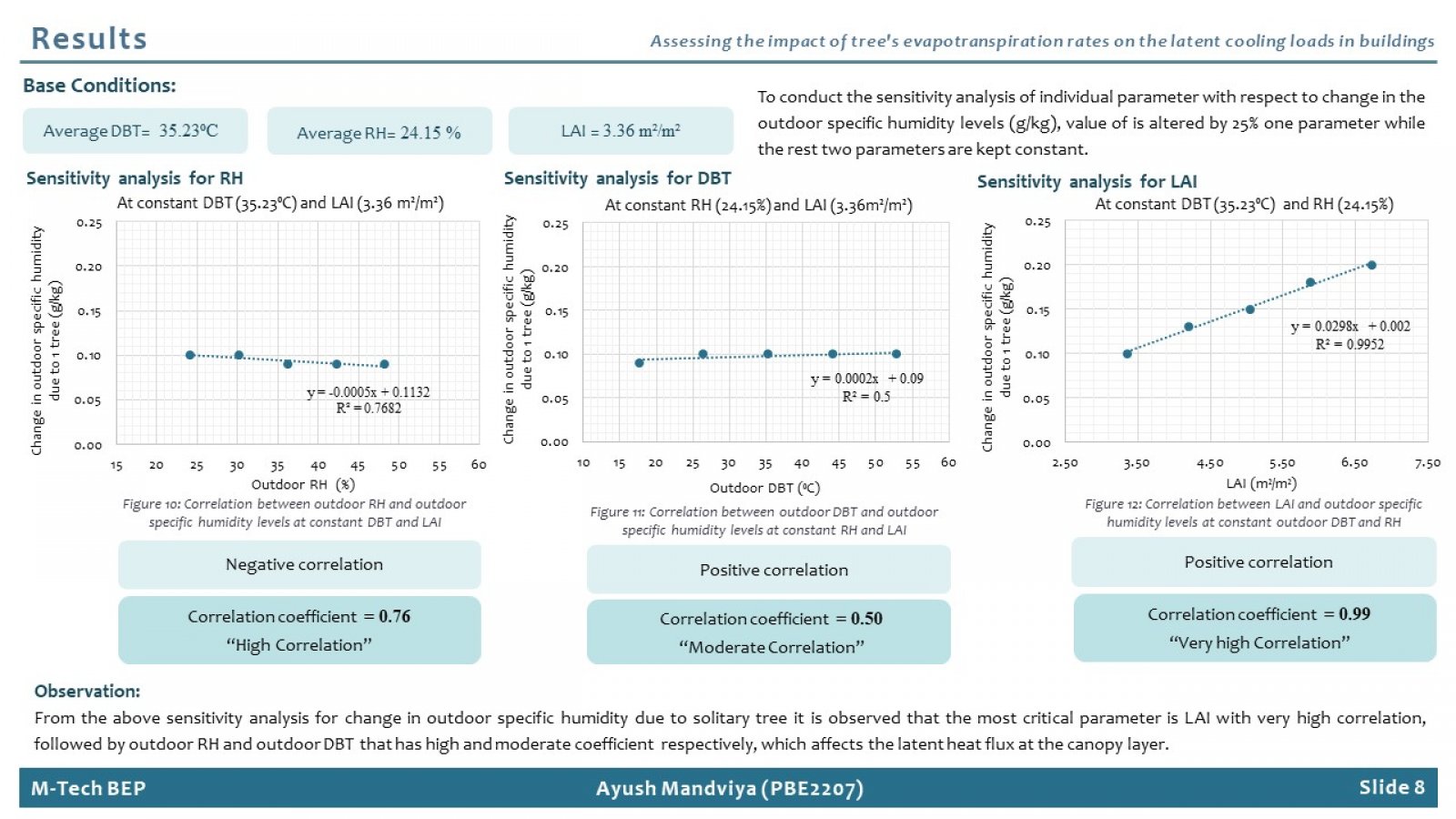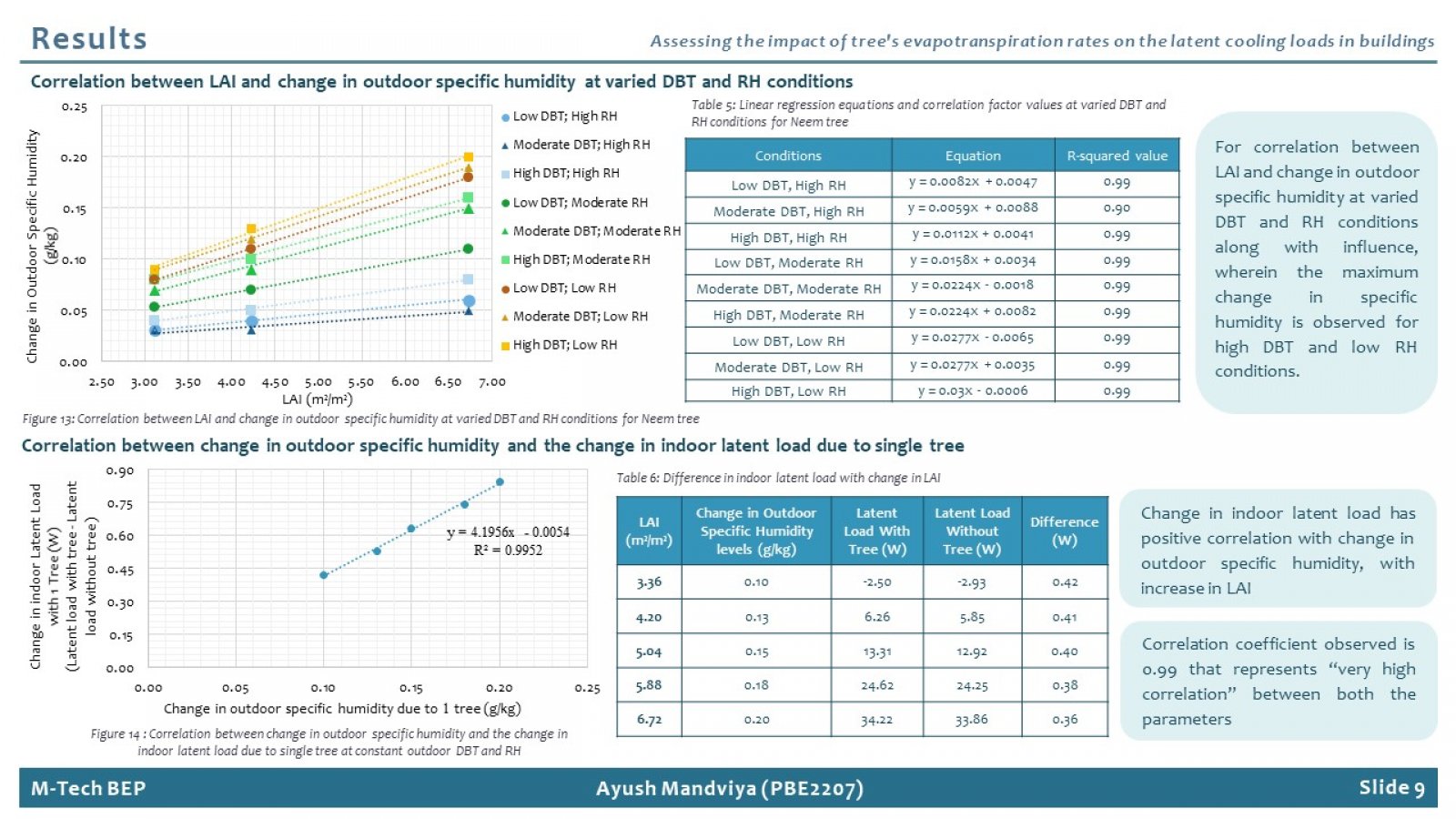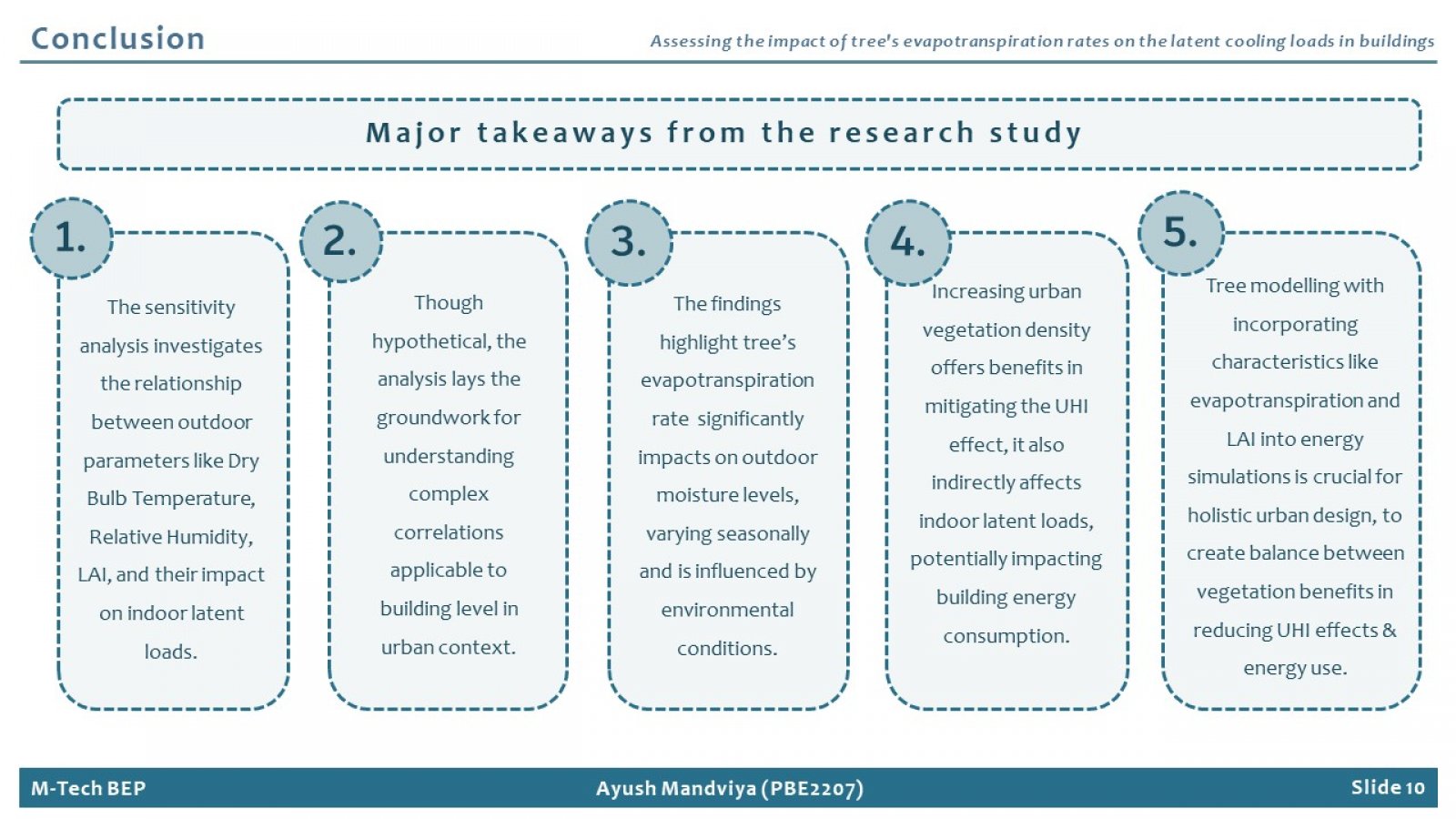Your browser is out-of-date!
For a richer surfing experience on our website, please update your browser. Update my browser now!
For a richer surfing experience on our website, please update your browser. Update my browser now!
As India undergoes rapid urbanization, the prevalence of Urban Heat Islands (UHI) and air pollution pose significant challenges to urban liveability and environmental sustainability. Nature-based solutions (NBS) such as urban tree canopy cover have emerged as promising strategies to mitigate these issues. This research investigates the seasonal impact of native tree evapotranspiration rates on building latent cooling loads in Ahmedabad, India. Using a methodology that integrates literature review and 3-D tree modelling, the study evaluates the influence of ten native tree species on indoor latent loads. The Fast All-season Soil Strength (FASST) Vegetation Model is employed to calculate latent heat flux at the canopy layer, while empirical formulas from the American Society of Heating, Refrigerating and Air-Conditioning Engineers (ASHRAE) Fundamentals guide indoor latent load calculations. The findings underscore the relationship between outdoor environmental parameters, tree characteristics, and indoor latent load variations. Notably, the study highlights that the evapotranspiration rates of single tree, influenced by factors such as density measured by Leaf Area Index (LAI), significantly impact the outdoor moisture levels with seasonal variations. While increasing urban vegetation density effectively mitigates the UHI effect, it may indirectly affect indoor humidity levels and potentially building energy consumption as well. Therefore, incorporating tree evapotranspiration rates into energy simulations and urban tree modelling is essential to balance the cooling benefits of trees with their impact on indoor environments while designing sustainable urban landscapes and creating comfortable urban environments.

